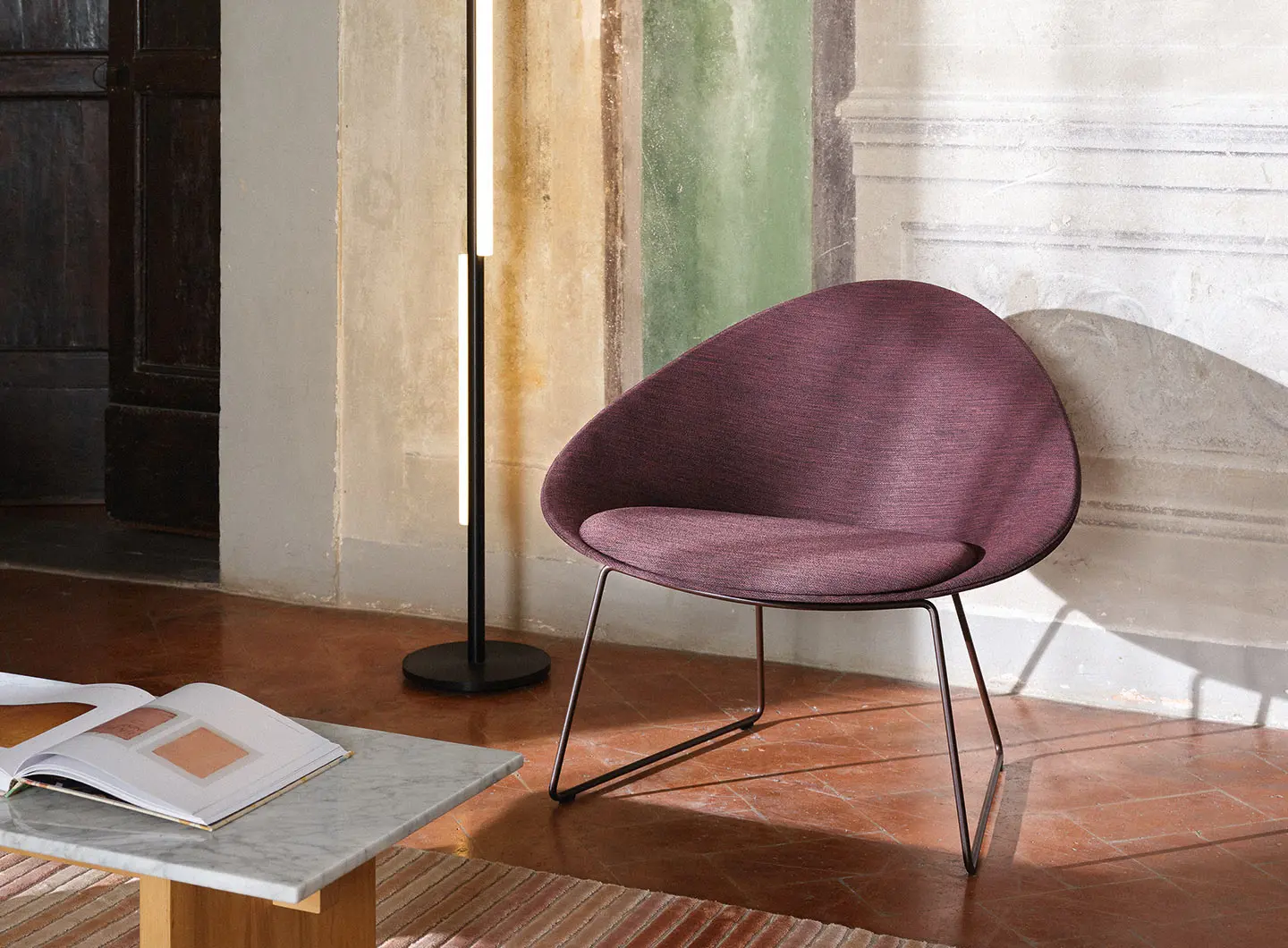From Japan to Norway, by way of India and the United States
Be seated!

Blume, Pedrali
Neither simple nor banal objects, chairs are the protagonists of our spaces. They adapt to a variety of situations and support the different shapes, movements and positions of our bodies.
If they were to ask us who our best friend and also who our most bitter enemy had been during the last few months of lockdown, the answer from many of us would be: a chair! The object to which we perhaps devoted least attention when furnishing our spaces, conscious that we would be spending most of the day away from home, and once at home, preferably snuggled up on a sofa or armchair if not in bed, even, has become the throne on which we have spent entire days. Working, studying, having lunch, having supper and playing. Basically, this neglected household object has had its revenge, and we have found ourselves having to face up to a not insignificant factor that we had previously taken for granted: the comfort of our chairs. We have realised that not all of them, even when excelling in terms of design, fashion and imagination, are actually very comfortable, or to put it technically, ergonomic. Actually, if we think about it, we’ve realised how crucial their versatility is in this “new normal”: chairs really do have to respond to an extraordinary variety of situations and needs, as well as supporting the shape, movements and different positions of our bodies.
So, conscious of the importance of these “by no means simple or banal” interior design objects, many brands have come up with new models or re-edited timeless icons for their catalogues over the last few months. The common thread is comfort and adaptability to a range of different situations.
As smooth as a stone, as delicate as a soft patch of moss, Arper has come up with Adell (design Lievore + Altherr Désile Park). Its organic, rounded and reassuring lines evoke a charming natural presence and it was, in fact, designed with sustainability very much in mind. The seat is made of 80% recycled and recyclable polypropylene, no glue has been used, the paint responds to precise environmental requirements and the chair can be totally disassembled for responsible disposal. Soft and lightweight, yet solid and substantial, this chair responds to a range of different needs and uses and provides a welcoming, comfortable refuge in a number of different contexts.

Adell, Arper - Photo by Frederick Vercruysse
Konstantin Grcic has designed the new Citizen Lounge Chair for Vitra, marking a small revolution. Thanks to its unconventional structure, it is a cross between an executive chair and a chaise longue (the high back version) or a lounge chair (low back version), channelling a feeling of dynamism and relaxation. Its formal vocabulary evokes elements of classic tubular steel furniture, but its slender open silhouette is a deliberately different design to that of a classic lounge chair. The seat is attached to the frame by three steel cables, allowing it to swing in all directions, while the fixed backrest allows the sitter to assume a semi-circular ergonomic sitting position. Lastly, further flexibility is assured by the swivelling base on which the structure rests. Not just for offices.

Citizen Lounge Chair, Vitra - Photo by Studio AKFB
Continuing Artek’s original tradition of intersecting art and technology, Ronan & Erwan Bouroullec have come up with Rope Chair: more than a form, it’s a line traced and translated into three dimensions, a simple artistic flourish that comes alive in the space. The marine-grade rope used for the backrest is the key to the chair’s comfort because it can be adapted by the sitter. Where other chairs dictate how one has to sit, Rope invites creativity of posture, encouraging dynamic movements and changes of position. When a sitter gets up, the frame of the chair bears the traces of the body it last supported, the imprint of a sitter which defines its shape. Basically, it is expressive creativity and sophisticated engineering at their purest.

Rope Chair, Artek
The step from engineering to artificial intelligence is (not) a short one. However Philippe Starck appears to be immune to the word “impossible” and, after a lengthy gestation (nearly two years), the A.I. chair has been produced by Kartell, created entirely from an algorithm based on instructions from the French designer, who wanted to create a good-looking, comfortable and robust chair using the smallest possible amount of material and energy. A.I. fully responds to the company’s focus on good sustainable practice and is the first chair to be made from 100% recycled material in which aesthetic quality and structural requirements are upheld and dovetail with the generative design. A tremendous example of circular economy.

A.I., Kartell - Photo by Simona Pesarini
Strong by Eugeni Quitllet for Desalto “is the idea of using air to give life to new ideas, taking shortcuts to a solution through a continuous form.” For the designer, bending means curving reality to create a dream: defying gravity by deploying a continuous line that is modelled to give shape to the chair. The name is a reference to the strength of the curved tubular steel that contrasts with the lightness of the air inside it. Form defines matter, matter gives life to form and design imbues character.

















